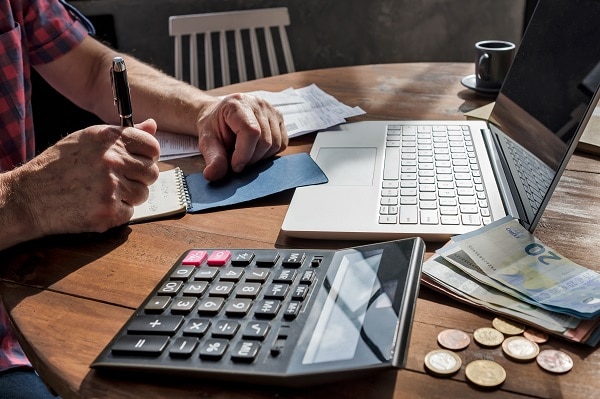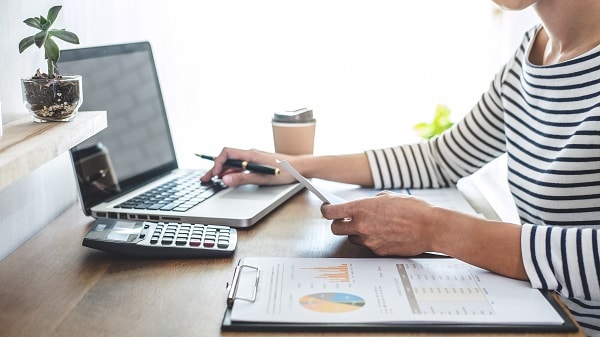A balance sheet mirrors a company’s financial health, and the equity, assets, and liabilities account for the major categories of a balance sheet. Assets and liabilities depict financial well-being. Let us discuss these terms in detail.
What Are Assets?
Assets are a combination of all that a business possesses, and they are on the left side of a balance sheet. Assets can be in current assets and fixed assets. The current assets are the ones that you can quickly turn into cash. These include cash, inventory, and accounts receivable. The higher the amount of current assets in a business, the longer is the ability to survive without a loan. On the other hand, fixed assets are physical things with a monetary value attached to them—for example, computers, machinery, tools, etc.
Assets can also be tangible assets and intangible assets. Tangible assets are the ones that can be physically touched, like machinery. Intangible assets do not have a physical appearance but have a monetary value attached to them, for example, copyright and brand value.
Common assets that a company can possess are accounts receivable (payments that the customers owe to you), cash in the account, stock, property, tools, machinery, vehicles, land, warehouses, copyrights, goodwill, trademarks, etc.
What Is Liquidity?
Assets are generally on the liquidity and how easily you can liquefy the asset into cash. Cash is the most liquid asset present in the balance sheet as you can immediately use it to pay an outstanding amount. An illiquid investment is something that you cannot liquefy to cash quickly. For example, converting these assets to cash is not a simple process for a factory, machinery, land, etc.
Current assets are the most liquid assets. You can change them to cash within no time. It includes assets like cash, securities, accounts receivable, or stock. Non-liquid assets are the fixed assets that have property, real estate, machinery, vehicles, etc. These assets contribute to the revenue, but you cannot quickly turn them into cash.
What Are Liabilities?
Liabilities are something that a business is indebted to people at present or in the future. They are on the right side of a balance sheet. The most common liability in a business is money that a company owes to suppliers. It is accounts payable.
Liabilities are under two heads- current liabilities and long-term liabilities. Current liabilities are the ones that settle within a year, and it includes credits by suppliers, loans, accounts payable, company expenses, salaries, etc. Long-term liabilities are the ones that need to be settled after a year. It includes long-term mortgages, bonds, etc.
A company has to pay back some common liabilities: accounts payable, bank loans, salaries and wages, taxes, interest payable, insurance payments, credit card outstanding, etc.
Difference Between Assets And Liabilities
In accounting terms, assets are the company’s holdings, and liabilities need paying back. The assets benefit the firm economically. It helps the brand to provide services or manufacture goods in the present or future.
Liabilities, on the other hand, are obligations that need paying back. A company is successful when it has more assets than liabilities. It can perform all the tasks efficiently as there will be no liquidity crunch. If the liabilities are more than assets, the company will find it difficult to pay the debts.
Both assets and liabilities are necessary for the smooth functioning of a business. They help the company to grow and operate smoothly. A correct mix and balance of both are essential for success.
What Is Equity?
In simple terms, equity is the total net worth of a firm. It simply means the difference between what you have and what you need to pay back. So it is the total of your assets subtracted by your liabilities. If you run a sole proprietorship firm or a partnership, then equity is also termed as owner’s equity, while in a company, it is shareholders’ equity.
The Equation To Calculate Equity Is Assets – Liabilities = Equity
The equity you are aware of is stocks or shares. The other form of equity includes preferred stocks, capital invested by the owners, retained earnings (profits kept for future use).
The Balance Sheet
The complete information about assets and liabilities is in a balance sheet. It is one of the most critical financial statements required by a company. Other vital statements include the cash flow statements and the income statements. Balance sheets summarize the position of assets, equity, and liabilities that the company possesses at any point in time. It is also known as the statement of financial situation.
Importance

The accounting system is on assets, equity, liabilities, and the accounting equation. It gives a clear picture of what you have and what you need to pay back. The net worth determines the actual value of the company. These terms help you know where the money is and how you need to pay it back and avoid any mistakes in accounting.
Accounting is on the principle of double-entry bookkeeping. A clear picture of assets and liabilities helps to clear all the doubts of debits and credits. All these terms allow you to plan the business finances better. You can manage the cash flows, maintain healthy credit, and see that the debts do not pile up. You can easily manage cash and credit transactions. It will help you make all the purchases carefully and confidently and tell you a clear picture of where the business stands.
Conclusion
As a business owner, it is imperative to know how to balance the company books. You need an in-depth understanding of equity, assets, and liabilities to make strategic decisions that will help you earn profits. The health of the business also remains sound. Once you understand what assets and liabilities are, understanding the technicalities of the financial reports also becomes easy.







